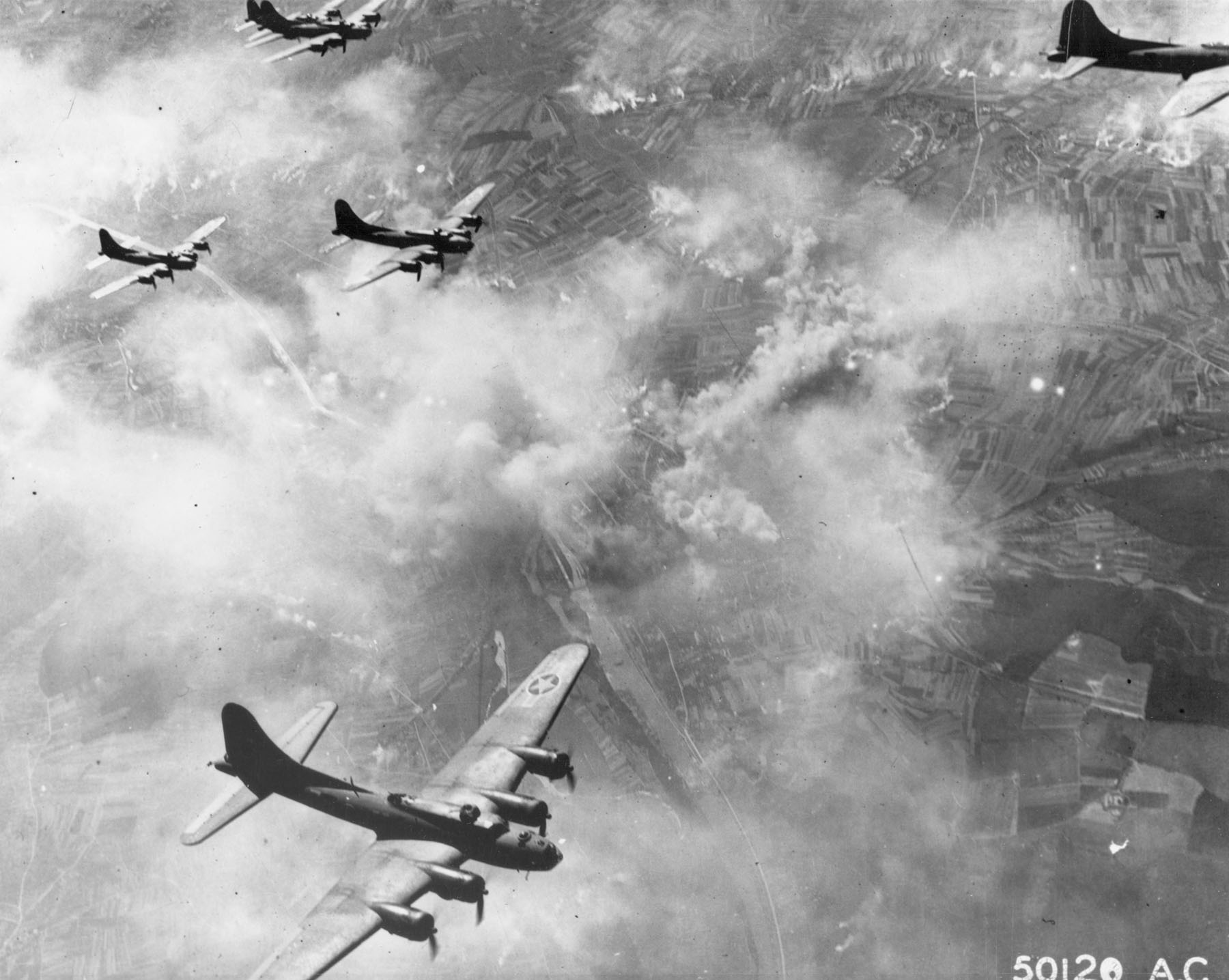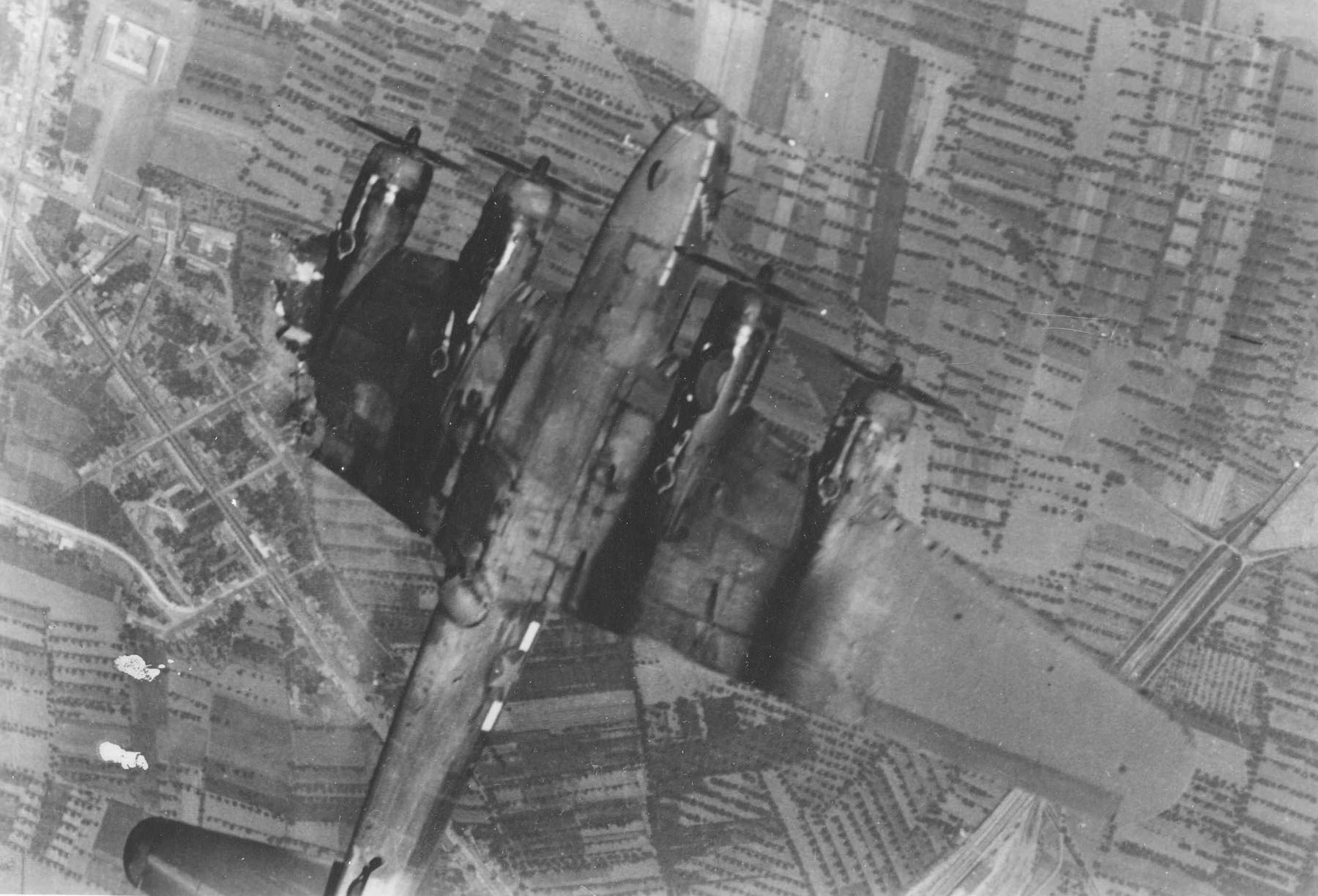
17 August 1943: Mission No. 84. One year after the Eighth Air Force first attacked occupied Europe with its B-17 Flying Fortress four-engine heavy bombers, a mass attack of 376 B-17s attacked the Messerschmitt Bf-109 factory at Regensburg, Germany, and the ball bearing factories at Schweinfurt.
Over Germany for over two hours without fighter escort, 60 bombers were shot down and as many as 95, though they made it to bases in Allied territory, were so badly damaged that they never flew again. 55 air crews (552 men) were listed as missing in action.
Of the 146 B-17s of the 4th Bombardment Wing which attacked Regensburg, 126 dropped their bombs, totaling 298.75 tons (271.02 Metric tons), destroying the factory and seriously slowing the production of the Messerschmitt Bf 109 fighter. After the attack, the 4th Bomb Wing headed for bases in North Africa. 122 B-17s landed there, half of them damaged.
The 1st Bombardment Wing (Heavy) sent 230 B-17s to Schweinfurt. Weather delays caused the planned diversion of two separate attacks to be unsuccessful. Cloud buildup over the Continent forced the bombers to fly at 17,000 feet (5,182 meters), nearly 10,000 feet (3,048 meters) lower than planned, increasing their vulnerability. Just 183 bombers made it to the target and dropped 424.3 tons (383.9 Metric tons) on the five factories in the target area. Then they headed back to their bases in England, under fighter attack most of the way. The 1st Bombardment Wing lost 36 bombers.
Though the raid did cut production of ball bearings as much as 34%, the losses were quickly made up from stockpiles. The two attacking forces succeeded in shooting down 25–27 German fighters.

© 2017, Bryan R. Swopes
re the B-17 going down.
Those poor people. What a rotten and terrifying way to go.
Yes. So many tragedies. . . The U.S. Army Air Forces lost 4,754 B-17s and 2,112 B-24s in the European Theater of Operation. Each had a crew of ten men. I recently came across an analysis of bomber crew casualties by crew position. A waist gunner was nearly twice as likely to be killed as any other position on the bomber. The Eighth suffered more than 47,000 casualties, with more than 26,000 killed. The death toll of World War II can never be fully known, but military deaths were on the order of 25,000,000, while civilian deaths numbered about 55,000,000 people. Worldwide, about 3% of the total population died because of the war.
My dad went down on the Regensberg raid. He spent the rest of the war in stalag Luft III. The things those men went through in the war should be an inspiration to young people today to give some time for their country or community.
I thought the tail gunner position had the highest number of crew members killed not the waist gunners position.
“Black Thursday” by Martin Caidin is a great account of this mission.
I think I read in the book “Fortress In The Sky” by Pete Bowers that the ball turret position was the safest, what with being enclosed in a hardened aluminum shell and all. When I volunteered at the late, great Planes Of Fame museum at Flying Cloud airport in Minnesota, I met several former B17 crewmembers, one of whom was a top turret gunner. He wore 2 hearing aids. Now think about this for a minute. You’re firing 2 Browning 50 caliber machine guns, and they’re located just a few inches away from your ear, while all you’re wearing are standard issue earphones. No such things as PPE back then.